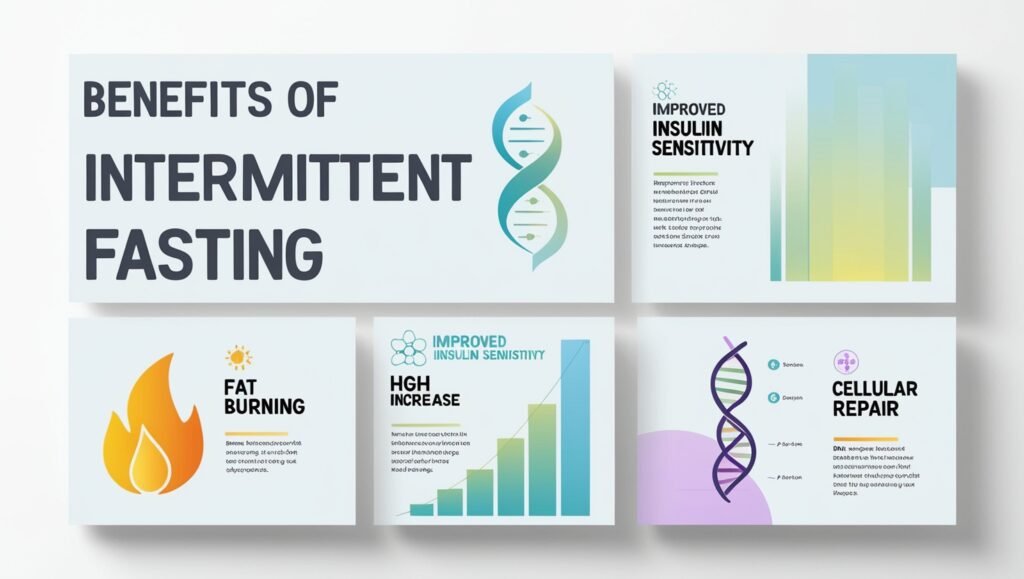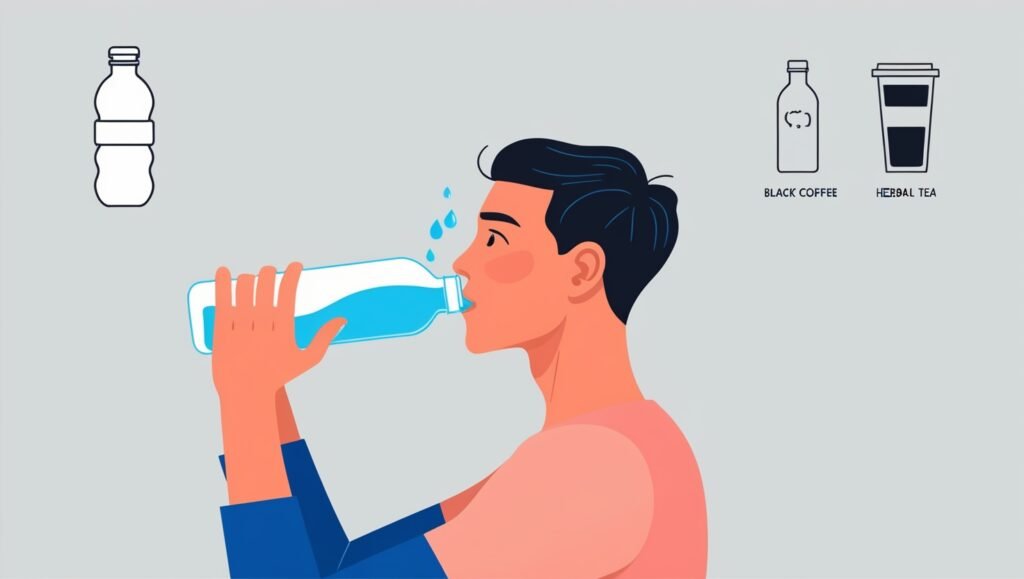Introduction
The Intermittent fasting diet has emerged as a popular approach to weight loss and overall health. This eating pattern alternates between fasting and eating, allowing the body to naturally burn fat while providing numerous other health benefits. People around the globe have adopted this method not only to lose weight but also to boost metabolism, improve mental clarity, and enhance longevity. This comprehensive guide will dive deep into the intermittent fasting diet, its different methods, the science behind it, and tips on how to implement it successfully.
Table of Contents
What is The Intermittent Fasting Diet?
Intermittent fasting (IF) is not a diet in the conventional sense, but rather an eating pattern. It doesn’t dictate which foods to eat but when to eat them. Unlike traditional diets, which focus on caloric restriction or specific food groups, intermittent fasting emphasizes time-restricted eating.
This method can vary in duration, from several hours of fasting each day to entire 24-hour fasting periods once or twice a week. During the fasting period, the body taps into its fat reserves for energy, leading to weight loss and other physiological benefits.
Table 1: Popular Intermittent Fasting Methods
| Method | Fasting Period | Eating Window |
|---|---|---|
| 16/8 | 16 hours of fasting | 8-hour eating window |
| 5:2 | 2 non-consecutive days of fasting | 5 days of normal eating |
| Eat-Stop-Eat | 24 hours of fasting | 24-hour break between fasts |
| Alternate-Day Fasting | Every other day fasting | Regular eating on alternate days |
| 20/4 (Warrior Diet) | 20 hours of fasting | 4-hour eating window |

How Intermittent Fasting Diet Works
Intermittent fasting triggers a series of changes in the body that promote fat burning, reduce inflammation, and improve metabolic processes. Here are the main physiological responses:
- Insulin Levels: When you eat, insulin levels rise, allowing your body to store glucose as fat. During fasting, insulin levels decrease, facilitating fat burning.
- Human Growth Hormone (HGH): Fasting increases HGH production, which promotes muscle growth and fat burning.
- Cellular Repair: Fasting initiates a process called autophagy, where cells remove dysfunctional components and repair themselves.
- Gene Expression: Fasting positively affects gene function related to longevity and disease protection.
These changes collectively help people burn fat, improve metabolic health, and protect against diseases like diabetes and heart disease.
Health Benefits of the Intermittent Fasting Diet

While the primary appeal of intermittent fasting is weight loss, it offers several other health benefits:
1. Weight Loss and Fat Loss
Intermittent fasting enhances the body’s ability to burn fat. By restricting eating windows, the body switches from burning glucose to stored fat for energy. Studies have shown that intermittent fasting can lead to significant weight loss, especially when combined with healthy eating habits.
A meta-analysis of 40 studies found that intermittent fasting can result in a 3–8% weight reduction over 3–24 weeks. Moreover, it significantly reduced waist circumference, indicating a loss of visceral fat—dangerous fat that surrounds organs.
2. Improved Insulin Sensitivity
Insulin resistance is a leading cause of Type 2 diabetes. Intermittent fasting helps to lower blood sugar levels and improve insulin sensitivity, reducing the risk of diabetes. A study in the journal Diabetes Research and Clinical Practice found that intermittent fasting led to a 3–6% reduction in fasting insulin and glucose levels.
3. Enhanced Brain Function
Intermittent fasting is believed to boost brain health by enhancing the production of a protein called brain-derived neurotrophic factor (BDNF). This protein supports brain function, memory, and learning while protecting against age-related diseases like Alzheimer’s. Some studies also show fasting may reduce oxidative stress and inflammation in the brain, which helps protect against cognitive decline.
4. Reduced Inflammation
Chronic inflammation contributes to various diseases, including heart disease, diabetes, and cancer. Intermittent fasting reduces inflammation by lowering levels of inflammatory markers like C-reactive protein (CRP). In a study published in the Journal of Nutrition and Healthy Aging, fasting was shown to significantly decrease these markers in overweight individuals.
5. Improved Heart Health
Heart disease remains the leading cause of death worldwide. Intermittent fasting can improve numerous risk factors, including cholesterol levels, blood pressure, and inflammatory markers. Research indicates that fasting lowers LDL cholesterol and triglycerides, improving overall heart health.
Different Intermittent Fasting Diet Methods
When adopting the intermittent fasting diet, choosing a method that fits your lifestyle and goals is crucial. Below are some of the most popular approaches:
1. The 16/8 Method
The 16/8 method involves fasting for 16 hours and eating within an 8-hour window. Most people skip breakfast and begin their first meal around noon, finishing their last meal by 8 p.m. This method is ideal for beginners because it’s relatively easy to follow and doesn’t require extreme restrictions.
2. The 5:2 Diet
This approach involves eating normally for five days of the week and significantly reducing calorie intake (around 500–600 calories) on two non-consecutive days. The 5:2 diet is a good option for those who prefer flexibility in their eating schedule.
3. Eat-Stop-Eat
This method involves fasting for 24 hours once or twice a week. While effective for some, it can be more challenging to follow, particularly for those who find long periods of fasting difficult.
4. Alternate-Day Fasting
Alternate-day fasting involves fasting every other day, alternating between a regular eating day and a day of fasting or severely restricted calorie intake (500–600 calories). This method can be challenging but effective for rapid fat loss.
5. The Warrior Diet
The Warrior Diet involves fasting for 20 hours and consuming all daily calories within a 4-hour window, usually in the evening. This plan encourages eating small amounts of raw fruits and vegetables during the fasting period and having one large meal at night.
Potential Drawbacks of Intermittent Fasting Diet
While intermittent fasting offers a range of benefits, it may not be suitable for everyone. Potential drawbacks include:
- Hunger and Cravings: Fasting periods may initially lead to intense hunger and cravings, making it challenging to stick to the regimen.
- Fatigue: Some people may experience fatigue, especially during the initial phase, as the body adjusts to fasting.
- Disordered Eating: Individuals with a history of eating disorders should avoid intermittent fasting, as it can trigger unhealthy eating behaviors.
- Hormonal Imbalance: Women, in particular, may experience hormonal disruptions due to extended fasting periods. It’s essential to monitor how your body responds and consult a healthcare professional if needed.
How to Get Started with Intermittent Fasting Diet

Getting started with intermittent fasting doesn’t require drastic changes to your diet. Here are some tips to help you ease into this eating pattern:
- Choose the Right Method: Begin with a method that fits your lifestyle. The 16/8 method is often recommended for beginners.
- Stay Hydrated: Drinking plenty of water, herbal teas, or black coffee can help curb hunger and keep you hydrated during fasting periods.
- Focus on Nutrient-Dense Foods: During eating periods, prioritize whole foods, including lean proteins, vegetables, fruits, healthy fats, and whole grains.
- Ease into Longer Fasts: If you’re new to fasting, start with shorter fasting periods and gradually increase the length of your fasts as your body adapts.
- Exercise Mindfully: While fasting, opt for low-intensity workouts, like walking or yoga, and save more intense activities for eating windows.
FAQs About Intermittent Fasting Diet
1. Is it safe to exercise during fasting periods?
Yes, it is safe, but it’s important to listen to your body. Low-intensity exercises like walking, yoga, or light resistance training are ideal.
2. Can I drink liquids during the fasting period?
Yes, you can drink water, herbal teas, and black coffee during fasting periods. Avoid beverages with added sugars or cream.
3. Who should avoid intermittent fasting?
Intermittent fasting may not be suitable for pregnant or breastfeeding women, individuals with a history of eating disorders, or those with certain medical conditions. Consult a healthcare provider before starting any fasting regimen.
4. Will intermittent fasting slow my metabolism?
No, intermittent fasting does not slow metabolism. In fact, it can boost metabolism by enhancing fat-burning processes.
Conclusion
The intermittent fasting diet is a powerful tool for weight loss, improving metabolic health, and boosting longevity. By incorporating fasting into your routine and selecting a method that aligns with your lifestyle, you can experience numerous health benefits without feeling deprived or restricted.
As with any significant lifestyle change, it’s essential to monitor how your body responds to intermittent fasting and make adjustments as necessary. If done correctly, intermittent fasting can be a sustainable and effective way to improve your health, both physically and mentally.
References
- Varady, K. A., & Hellerstein, M. K. (2017). “Intermittent fasting and weight loss: A systematic review.” Obesity Reviews, 13(5), 465–477.
- Mattson, M. P., Longo, V. D., & Harvie, M. (2017). “Impact of intermittent fasting on health and disease processes.” Ageing Research Reviews, 39, 46–58.
- Longo, V. D., & Panda, S. (2016). “Fasting, Circadian Rhythms, and Time-Restricted Feeding in Healthy Lifespan.” Cell Metabolism, 23(6), 1048–1059.
- Patterson, R. E., & Sears, D. D. (2020). “Metabolic Effects of Intermittent Fasting.” Annual Review of Nutrition, 37(1), 371–393.




